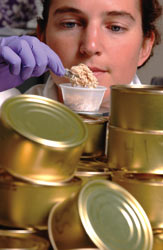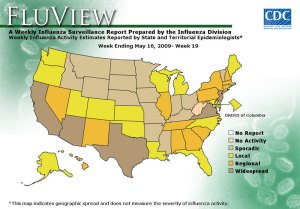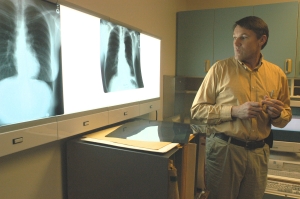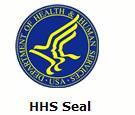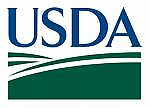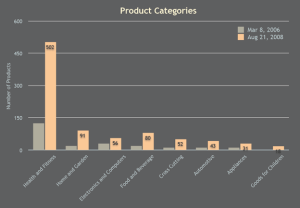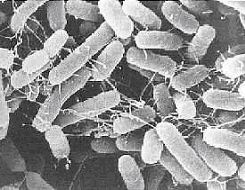Scientists worry that the “new,” “completely safe” butter flavoring used on popcorn and in other foods may be as dangerous as the lung-destroying chemical, called diacetyl, that it replaced.
Diacetyl-linked jury verdicts of tens of millions of dollars for injured flavoring workers and the diagnoses of lung damage in at least three popcorn-loving consumers forced popcorn packers and other food processors to stop using the chemical butter-flavoring two years ago.
Orville Redenbacher rose from the grave to proudly announce in a TV ad that the company’s popcorn was now diacetyl-free. And other manufacturers plastered that message in large type on the side of their packages.
 When asked in the last two years how they were getting the buttery flavor consumers want without diacetyl, the largest popcorn makers answered with a “no comment,” saying the secret flavoring was safe, but proprietary.
When asked in the last two years how they were getting the buttery flavor consumers want without diacetyl, the largest popcorn makers answered with a “no comment,” saying the secret flavoring was safe, but proprietary.
Fortunately, a group of government health investigators at the National Institute of Occupational Safety and Health have begun lifting the veil of corporate secrecy.
“Two possible substitutes are starter distillate and diacetyl trimmer,” NIOSH Drs. Kathleen Kreiss and Nancy Sahakian just wrote in a newly released book, “Advances in Food and Nutrition Research.
“The distillate is a diacetyl-containing product of a fermentation process. The trimmer is a molecule containing three diacetyl molecules,” they wrote. “The inclusion of these alternative substances neither eliminate diacetyl nor assure safety for workers.’’
Kreiss, chief of NIOSH’s Field Studies Branch, also talked about the popcorn advertisements in informal remarks prepared for the American Thoracic Society conference earlier this month in San Diego.
“The wording here (no added diacetyl) is telling,” said Kreiss, whose team of worker health and safety investigators were the first to respond to the reports of disease at Midwest popcorn plants.
In the presentation to the specialists in respiratory disease, Kreiss discussed the flavoring to which many food producers had switched.
“The easiest substitute for the chemical diacetyl is starter distillate, a fermentation product of milk which contains up to 4 percent diacetyl. The chemical may not be added, but diacetyl is still in butter-flavored popcorn,” she explained.
She said some of the substitutes are better able to penetrate to the deepest parts of the lung and are unlikely to be safer to inhale than the original diacetyl.
Physicians, scientists and industrial hygienists at NIOSH’s Division of Respiratory Disease Studies are working hard on multiple efforts to investigate the possible toxicity of butter flavoring chemicals being used as a substitute for the diacetyl.
“We’re trying to identify the mechanism of diacetyl-induced injury. And if that happens, it will help us identify other potentially hazardous compounds workers may be exposed to in the flavoring industry,” said Dr. Ann Hubbs, a veterinary pathologist in NIOSH’s Health Effects Laboratory Division.
Hubbs told me last week, “We are trying hard to answer the question of why diacetyl — and potentially the related substances — are so very toxic,”
Kreiss and her team have responded to plants using flavorings throughout the country. They have watched patiently as OSHA first ignored and then moved haltingly to comply with congressional orders and union pleas to develop diacetyl exposure standards that would protect workers.
But even though President Obama’s new team at the Labor Department promised speedy action on diacetyl standards, many public health and occupational medicine experts worry that it may be too little, coming too late.
“As regulatory action develops, the flavor industry has introduced diacetyl substitutes, which might not be regulated by a diacetyl standard now on the drawing board,” Kreiss said in notes accompanying her slide presentation to the chest doctors.
Dr. Celeste Monforton and her colleagues at George Washington University’s Department of Environmental and Occupational Health have been following the diacetyl issue for years.
She echoes NIOSH and says that OSHA and the Food and Drug Administration must pay attention to the substitutes in its rulemaking if workers and consumers are to be protected.
“We know far too little about the the substitutes to diacetyl or reformulated diacetyl-compounds that food manufacturers are now using, or planning to use,” she told me this week.
As a part of its rule making, OSHA must insist that the manufacturers provide information on the chemical composition and toxicity testing of their substitutes, she said.
“We are dealing with the safety of workers and consumers and secrecy cannot be justified,” Monforton said.
“This potential danger goes well beyond just popcorn.”


 When asked in the last two years how they were getting the buttery flavor consumers want without diacetyl, the largest popcorn makers answered with a “no comment,” saying the secret flavoring was safe, but proprietary.
When asked in the last two years how they were getting the buttery flavor consumers want without diacetyl, the largest popcorn makers answered with a “no comment,” saying the secret flavoring was safe, but proprietary.